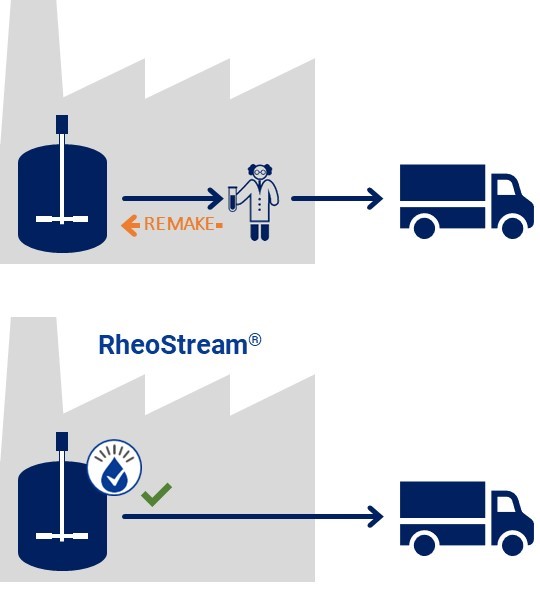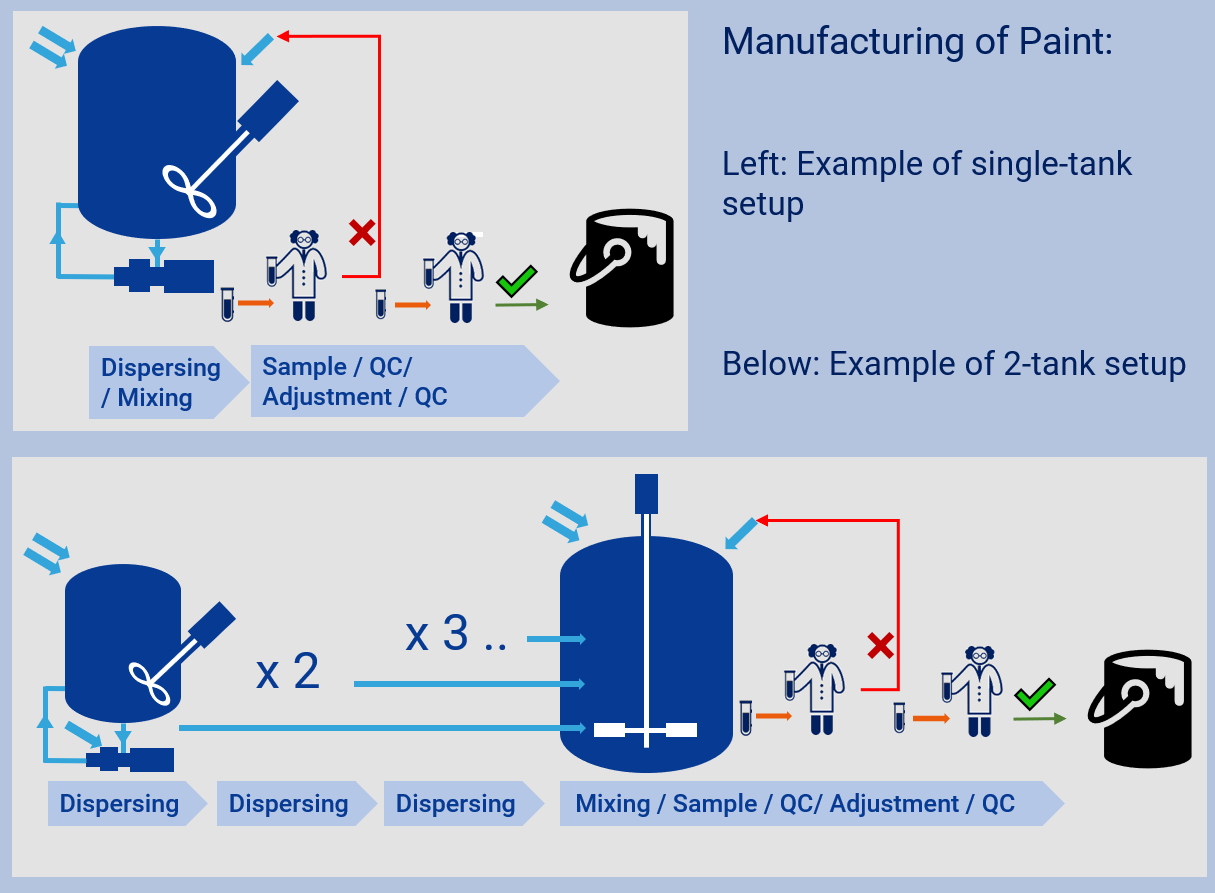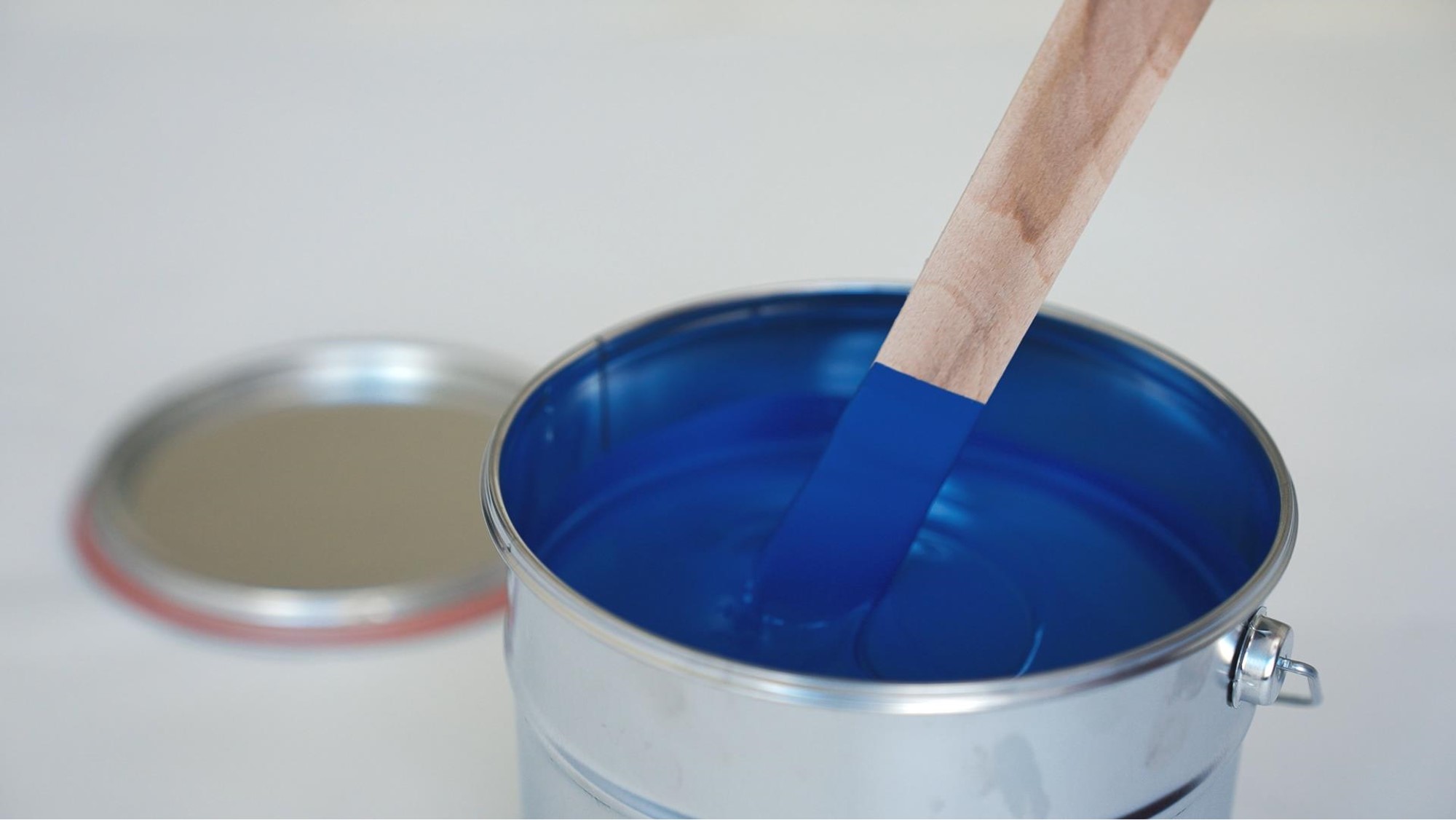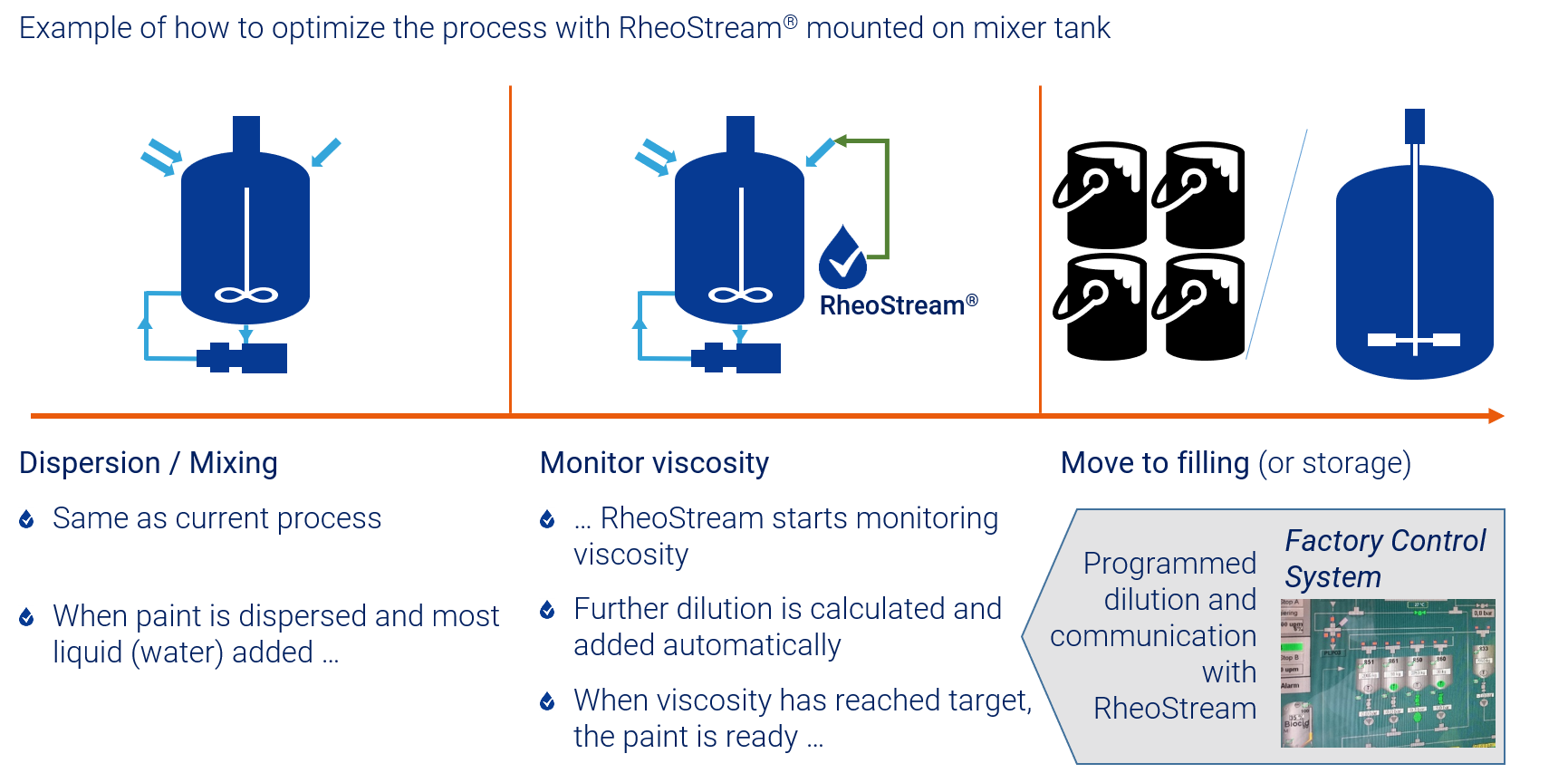
Automate Viscosity Control in Manufacture of Paint
Automation of viscosity control brings many benefits:
![]() Get First-time-Right, no manual corrections
Get First-time-Right, no manual corrections
![]() Improve Overall Equipment Efficiency
Improve Overall Equipment Efficiency
![]() Deliver on time – streamline supply chain
Deliver on time – streamline supply chain
![]() Eliminate human errors
Eliminate human errors
![]() Reduce resources for off-line analysis
Reduce resources for off-line analysis
![]() Deliver an even more consistent quality and eliminate waste
Deliver an even more consistent quality and eliminate waste
![]() Get data for Industry 4.0 / new insights
Get data for Industry 4.0 / new insights

Rewatch Fluidan's presentation from European Coatings Show Conference, 2021
The European Coatings Show in 2021, was held as an online event, where Fluidan presented RheoStream®.
Fluidan showcased the advantages and practical uses of RheoStream, emphasizing its ability to automate viscosity control within the paints and coatings sector. Did you know, that in paint manufacturing, typically 20-50% of all batches produced need to be adjusted for viscosity after the first QC check?
Paint and Paint Making
A paint or coating is a complex colloidal system that is applied as a continuous layer to a surface. The purpose may be mainly decorative (get the right color on a wall and the right pearly look of a car), but mostly the coating also provides important protection (against weather, wear, corrosion, etc.) and function (for instance a smooth washable surface, or low resistance on a ship).
Paints typically consist of binders, pigments, solvents, and additives. The pigments give the paint color and opacity; solvents make it easier to apply and flow; binders help it adhere and form a thin film. Additives can have many functions, but there will always be additives to modify rheology, including viscosity.
Paint is made in a batch process, with two main production (mixing) steps:
- Premix and dispersion
- Finishing (and tinting)
These steps may all be carried out sequentially in one tank or may be split on two consecutive tanks – a disperser/mixer and a let-down tank.

In the finishing step the rheology additives are added and the volume is brought up to the final volume by addition of solvent (organic solvent or water). This step determines the paint rheology.
Viscosity plays a critical role in the end-use performance. Some paints should make a thick protective layer, others a fine glossy surface. Some paints are made for brushing or rolling, others for spraying or even dip coating. The viscosity determines how the paint is to work with and it influences parameters such as film build, color match, voids, and chemical resistance. And even before the paint gets to the end-user, the viscosity and yield stress determines if the paint is stable during storage.
Correct paint viscosity is, therefore, the key to good paint quality. There is no way around it: The viscosity must be carefully controlled.
Viscosity Profile of Coatings
In fact, all such requirements are contradicting – fortunately, with careful formulation it is possible to make paints that are thick in the can, but thin when brushed on a wall. This property is called shear thinning.
The viscosity of a paint changes under different conditions. During processing and application, paints are subjected to various shear regimes [Read about shear rates]. For example, in the production process, paint is pumped around the plant, subjecting it to moderate to high shear, whereas storage and transportation are low-shear processes. An application can vary from moderate (dipping) to high shear (roller coating, spraying) – see the illustration right.

In the low shear regions (< 10 s-1), paints are expected to have high, solid-like viscosity to prevent phase separation and sedimentation. During production (10 – 1000 s-1), the paint is expected to have a medium viscosity such that it is easy for pumping, mixing, or stirring. During application (> 1000 s-1), the paint must be thin enough such that it is easy to apply by brushing, rolling, etc.
Controlling Viscosity of Paints – the traditional way
Before the introduction of RheoStream®, paint viscosity had to be manually controlled.
There are many ways to do this, but they all have in common that after mixing a batch of paint a sample must be taken out and measured with a device. Traditional devices include flow cups and more or less sophisticated viscometers or rheometers located on the factory floor or in the QC lab.
Such a measurement takes time and resources. In practice, this means that the paint is finished, then it is controlled, and if it “passes the test” (the viscosity is within the acceptance limits), the batch may be filled.
Now, if the batch is not right the first time, it must be corrected to higher or lower viscosity, mixed well, and then a new sample is taken and measured.

The manual methods used are prone to inaccuracies and risk of human error. And because the result of the measurement is used to determine the final correction of the paint and to verify the final quality, any inaccuracy or error may lead to poor quality paint.
In our dialogue with most of the leading paint manufacturers across Europe, Fluidan has found the proportion of paint batches that are “Right-First-Time” varies between 40% and up to 90%. This means that 10-60% of all batches must be corrected, and then measured again. Many batches are not even in compliance with the specifications 2nd time in the QC lab and must be corrected a second time.
While this correction goes on (and on…), the batch of paint occupies the main production tank or the let-down tank and does not reach the finished goods warehouse or the truck.
As a result, the capacity utilization is not good, and it is difficult to manufacture “just-in-time”. Occasionally, a batch of paint is too difficult to correct and may go to waste.
In most paint processes, it is quite complicated to increase the viscosity, in case the analysis shows that the paint is too thin – it is simpler to add in extra solvent to lower the viscosity. This leads to deliberately making the paint a bit too thick, then wait for the analysis, and finally to dilute the paint, then analyze again.
Automatic Viscosity Adjustment with RheoStream®
With RheoStream, the viscosity is measured every 1-2 minutes.
RheoStream is installed on the mixer tank or the let-down tank – this depends on where the ingredients that determine the final viscosity are added. RheoStream can measure the viscosity throughout the final mixing steps. When all ingredients are added, and only a final dilution with water or solvent remains, the dilution is controlled by using the viscosity information from RheoStream.
Today, when a viscosity measurement is done, QC or the control room calculates a “correction recipe”- for instance, how much water must be added? The dilution is done manually or automatically.
In a full implementation of RheoStream, the dilution can be automated. The factory control system will hold the information about the dilution recipes, and RheoStream ensures that the viscosity target is hit, spot on, first time. Right-First-Time, every time.

The Benefits of Viscosity Control with RheoStream
Some paint productions are already fully automated – until the point of viscosity control, which is still manual. With RheoStream the entire process can be automated. Now viscosity is a control parameter.
Even with a lower degree of automation, the benefits are obvious, when a manual and time-consuming task is replaced by a very fast, fully automated, and very precise viscosity measurement.
Get the Full Picture – and Even Better Quality
Current manual viscosity methods provide only single point viscosities, which does not give the complete picture of paint behavior. Some manual methods, such as flow cups, Stormer viscometers and similar simple devices do not even measure viscosity at one, well-defined viscosity.
A single point measurement is only sufficient if the paint has the same viscosity for all the shear rates occurring during production and application. However, that is not the case for non-Newtonian, shear-thinning liquids such as paints. (See “Why Shear Rate Matters in Process Control”). Therefore, the generation of a viscosity curve that spans the shear rate range of interest can provide the information required to characterize and control product performance.
RheoStream can read out the viscosity at 3 different shear rates, and this allows you to define acceptance criteria at these shear rates. That will result in an even better control of the quality.

Fluidan ApS
Company register: DK36392355
Authorized representatives: Anders L. Østergård (CEO) or Fridolin Okkels (CTO) and Steen Hoff (Chairman of Board)
Privacy
Our privacy policy
Address
Diplomvej 381
2800 Kgs. Lyngby
Denmark
